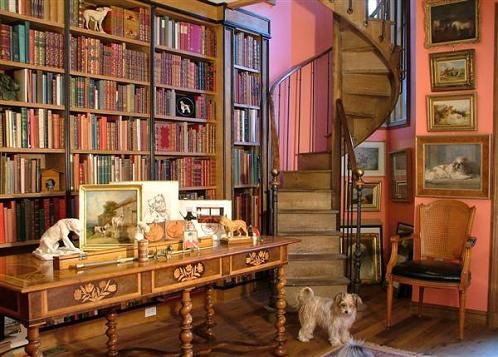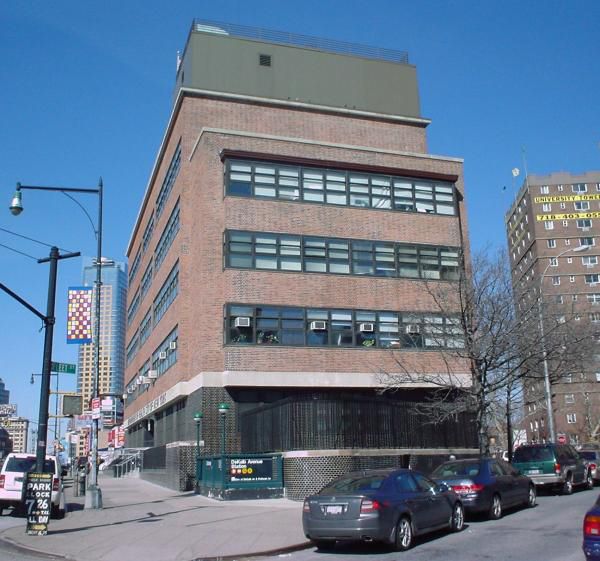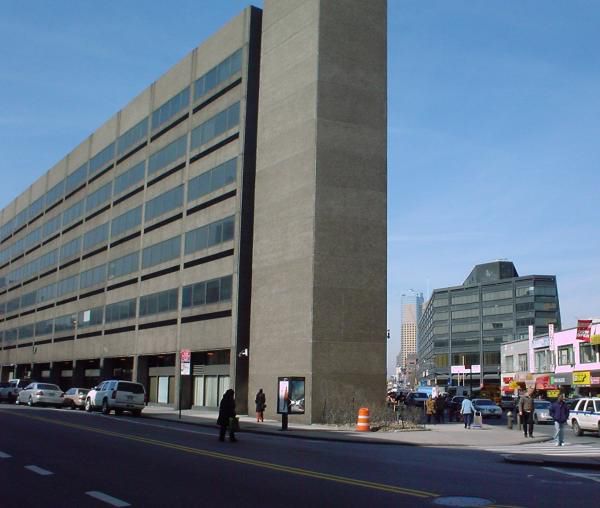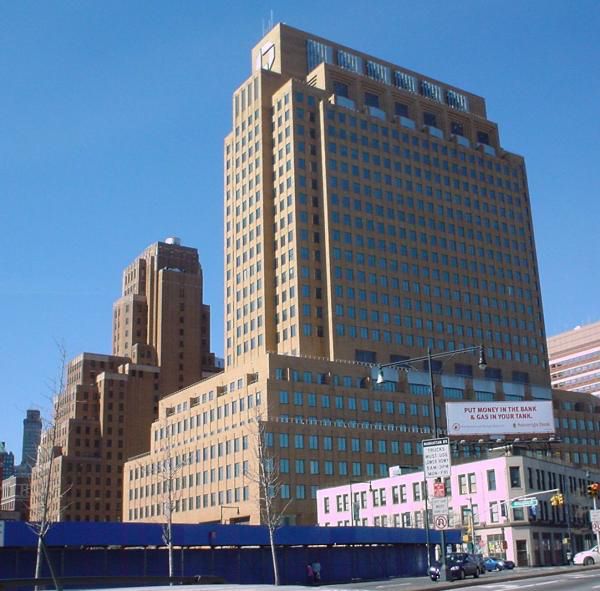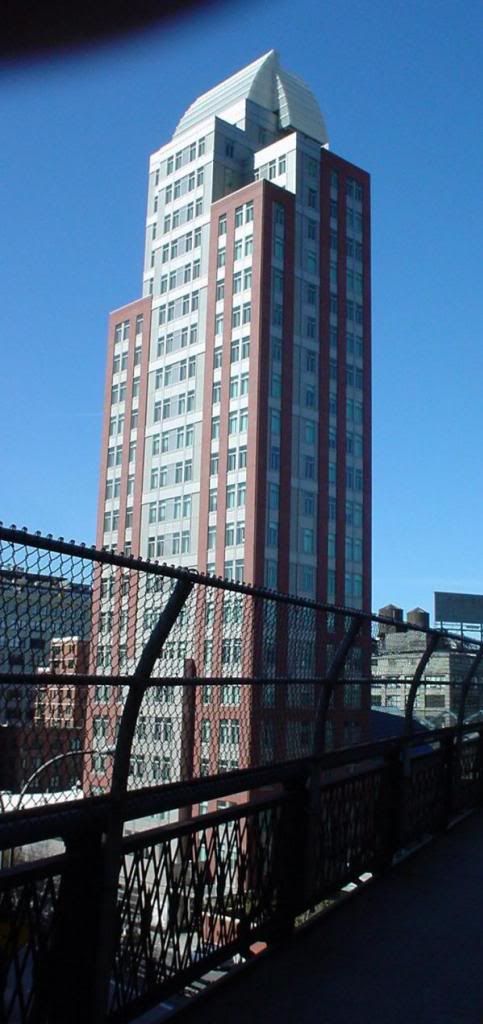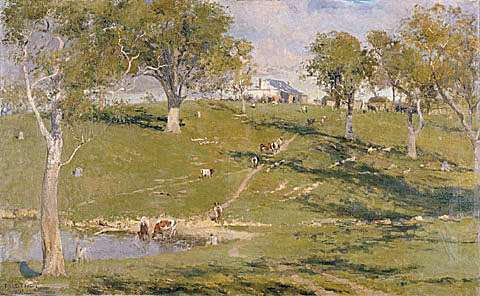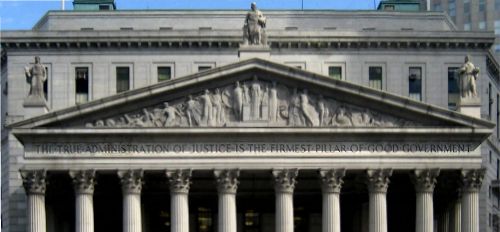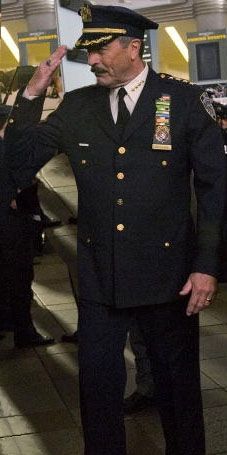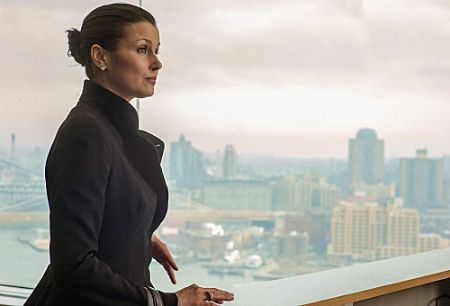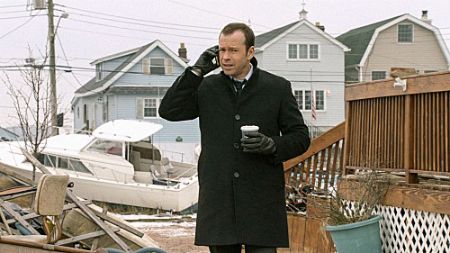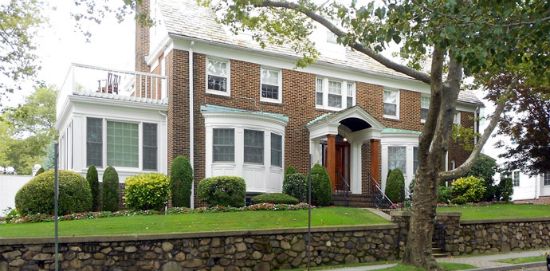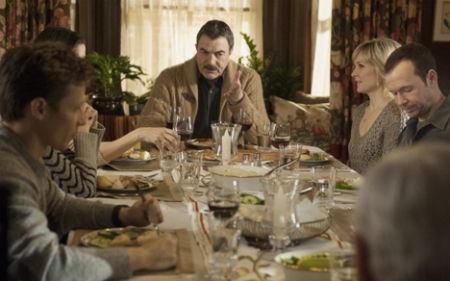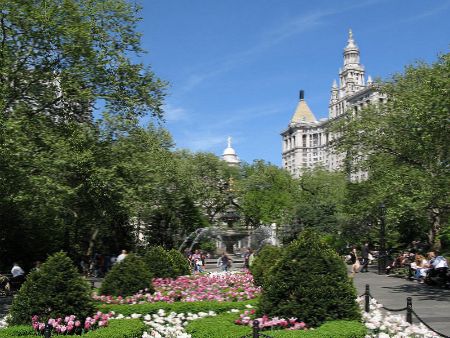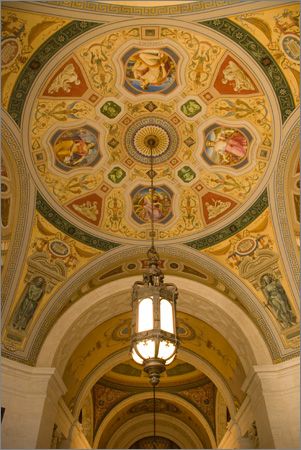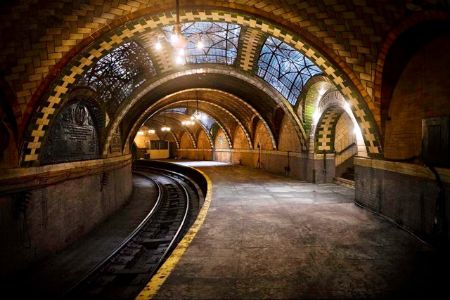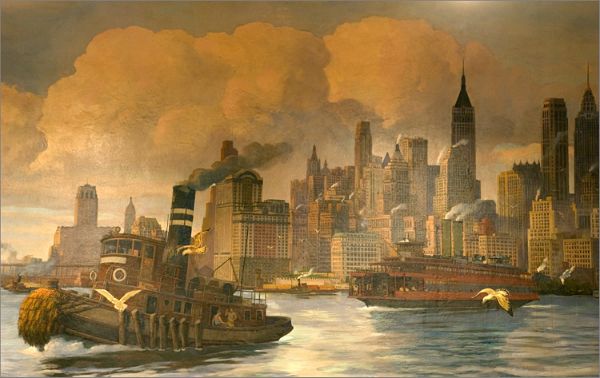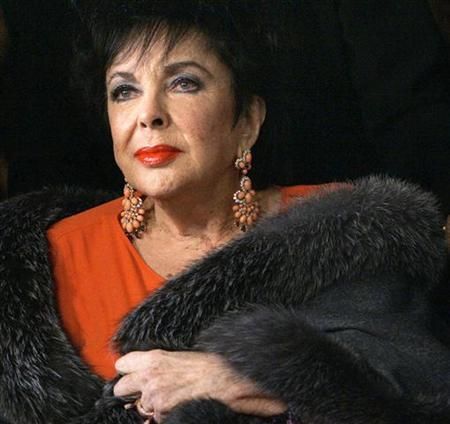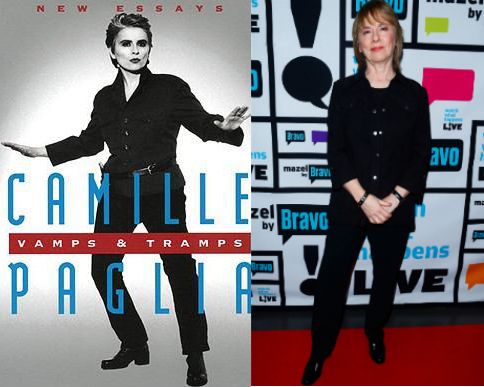
The Art Deco stage at the 2013 OscarsI watched the whole Oscar's show last night. It wasn't for the movies, since the only one I've watched is
Anna Karenina (which I blogged about
here). I don't go to the movies anymore. We are made to watch violently ugly films in claustrophobic theaters with unbearably loud speakers. Movie going (even the popcorn) is an unpleasant experience.
I have read some articles and reviews on a few of these movies. Based on what I'd read, and the interviews I watched of the filmmaker and actors, here is what I
wrote about
Django Unchained, the (evil) film that Quentin Tarantino directed.
So why watch the Oscars? I find it fascinating that actresses who will act in sado-masochistic, nihilistic or (I should probably write "and" since these films usually encompass the whole gamut of ugliness) violent films want to still show up all glizted-up. As one actress said at the "red carpet" interview: "It's like dress-up."
But it is more than that. Some of the gowns I saw were reminiscent of the glamorous movie stars when Hollywood was at its filmmaking peak, which was also its glamorous peak. I think this era is from around the thirties to the mid-fifties. These 21st century actresses want to evoke that spirit: of beauty, of glamour, of style and of stardom. None qualify. I
really cannot think of one actress who personifies any of these movie star qualities. Many are talented, but they cover up that talent with those horrible characters and roles they play. Of course, one can blame the real big-shots, the writers, directors, producers and the whole army behind a film. The actresses have no choice but to oblige, unless they want to sit at home without a job.
Before I go into fashion critique, here are a couple indications that Hollywood
is trying to return to its glamorous image.
- The musical numbers were from old Broadway musicals, replete with men in tuxedos and women in ball gowns dancing elaborate stage productions.
- The funny, diminutive host, Seth MacFarlane, sang a couple of those songs in a very good voice. Here is MacFarlane's muscial background:
MacFarlane is a skilled pianist and singer who, in his early years, trained with Lee and Sally Sweetland, Barbra Streisand and Frank Sinatra's vocal coaches. In 2009, he appeared as a vocalist at the BBC Proms with the John Wilson Orchestra in Prom 22 A Celebration of Classic MGM Film Musicals.[69] In 2012, it was announced he would again appear at the Proms with the John Wilson Orchestra in a concert celebrating Broadway musicals.[70]
His day job is
designing cartoons for TV shows, a skill he acquired after many years in art and design schools.

Comedian host Seth MacFarlane.- The stage was designed in Art Deco, old Broadway style.
So what did these shadows of movie stars come up with, that showed me they really want to look beautiful and worthy of the noble Hollywood tradition?
Below are the styles of dresses that I saw. This is 21st century Hollywood, so the nihilistic, anti-beauty was fighting to get through.
1.
Structured Black and Gold Art Deco Style Dresses- Naomi Watts looks like a Rolls Royce figurine (see below)
-
Nicole Kidman's dress was a less structured, but she looked pretty with her curly hair (but whose wispy style didn't really go with the formal dress).
- Halle Berry's front opened up almost down to her belly, but she (or her designers) covered the exposed area with additional material. (see below)
-
Selma Hayek showed up in what looked like a medieval metal girdle, all the way up to her neck. She usually shows up with exposed breasts. She recently married a French business man, so he probably told her to shape up.
-
Sandra Bullock tried with her lacy black gown. But the dress designers were too smart to go with pure, sheer lace, and put a "nude" - as the fashion commentators kept saying, but which really means skin-colored - slip underneath. It looked cheap and improvised.
The Best of the Art Deco:
Naomi Watts looked like a Rolls Royce figurine
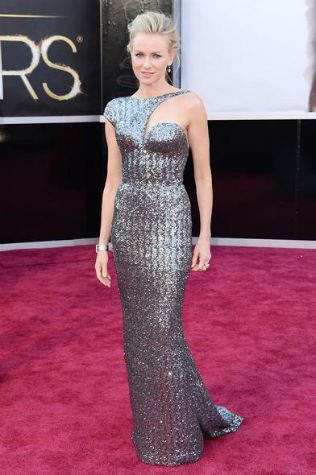 Naomi WattsThe Most Like Art Deco
Naomi WattsThe Most Like Art Deco:
Halle Berry Could have been a human form of an Art Deco building
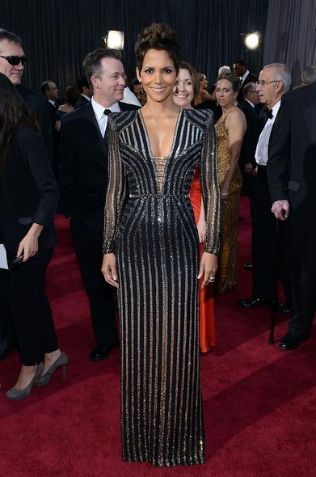 Halle Berry
Halle Berry2.
Ball Gowns- Jennifer Aniston in a coral/red Cinderella dress. But I wish she would return to her famous "
Rachel Hair" from
Friends. (see below)
- Amy Adams in a feathery grey (see below)
-
Jennifer Lawrence wore a crumpled white gown. "Edgy" is how one commentator desribed it. Yes, an "edgy ball gown." Perfect fit for an "edgy" modern girl.
The Best of the Ball Gowns:
Jennifer Aniston came in a full-blown ball gown
 Jennifer AnistonThe Most Whimsical Ball Gown
Jennifer AnistonThe Most Whimsical Ball Gown:
Amy Adams in a light grey Cinderella dress
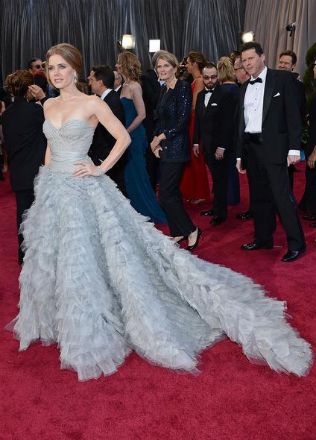 Amy Adams
Amy Adams3.
Gowns with Trails- Zoe Saldana in variations of grey (see below)
- Jennifer Garner with a ruffled trail (see below)
-
Reese Witherspoon in electric blue
-
Helen Hunt in another one of those crumpled, "casual" looks. But she did make that
horrible "sex" (read pornographic) movie, of which she is "very proud." What we do affects who we are, and who we become. How do these smart women not realize this?
Wave-like trail:
Zoe Saldana's beautiful gown with variations of grey and white. The belt was unnecessary though.
 Zoe SaldanaTrail with ruffles
Zoe SaldanaTrail with ruffles:
Jennifer Garner in a plum gown with ruffles at the back
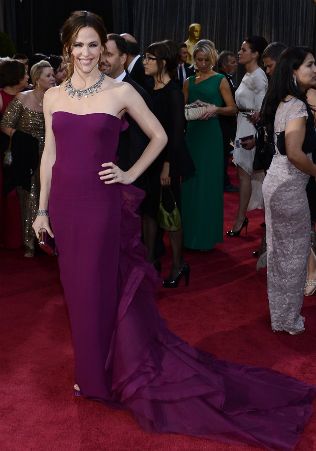 Jennifer Garner
Jennifer Garner4.
Gowns with Applique-
Kristen Stewart with applique leaves on chiffon. Even "
vampire girls" want to look pretty.
-
Ditto (in film and fashion choices) Amanda Seifried (see below)
-
Catherine Zeta Jones trying too hard in gaudy gold (at least she's lost that fake American accent, although it's more chic to sound British these days).
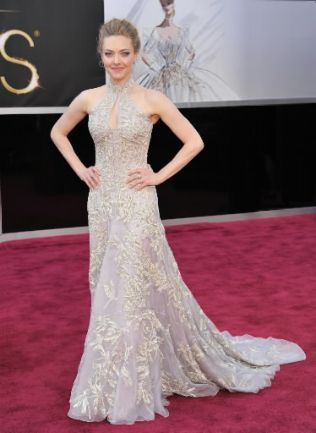 Amanda Seyfried
Amanda Seyfried5.
Gowns with Jewels-
Jessica Chastain in a crystal-bedecked peach gown
-
Kerri Washington in a coral gown with a beaded bust
- Jane Fonda in a canary yellow dress, with a wide belt of jewels. I don't know how Jane Fonda manages to look so young. It is probably a mixture of plastic surgery and her famous
exercise routines. (see below)
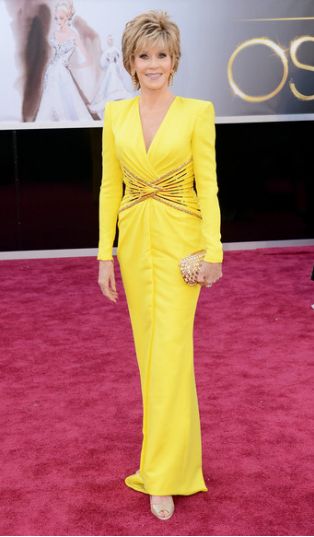 Jane Fonda
Jane Fonda6.
Gowns in Silver or GoldRenee Zellweger all in gold. But, she could have left out the clumsy bracelet.
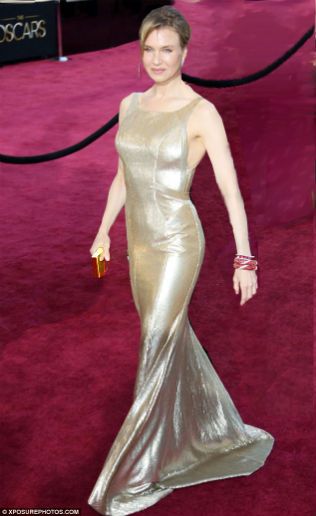 Renee Zellweger
Renee ZellwegerAnd who was the Oscar fashions "designer" commentator? Vera Wang was video taped making commentary on the best dressed of Hollywood stars at the Oscars over the years. She showed up looking something like this (the video, for some reason, is not online).
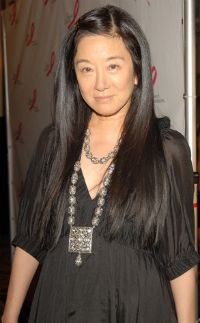 Vera Wang
Vera Wang Georgian Champan, of the beautiful
Marchesa line, was also making commentaries. What a contrast from the aggressive Wang.
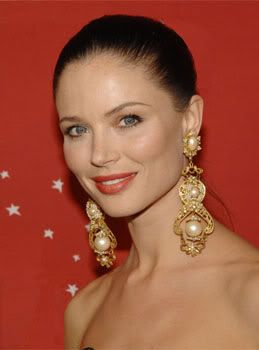 Georgina Champan
Georgina Champan-----------------------------------------------------------------------------------------------------------------------------------------------------
Posted By: Kidist P. Asrat
